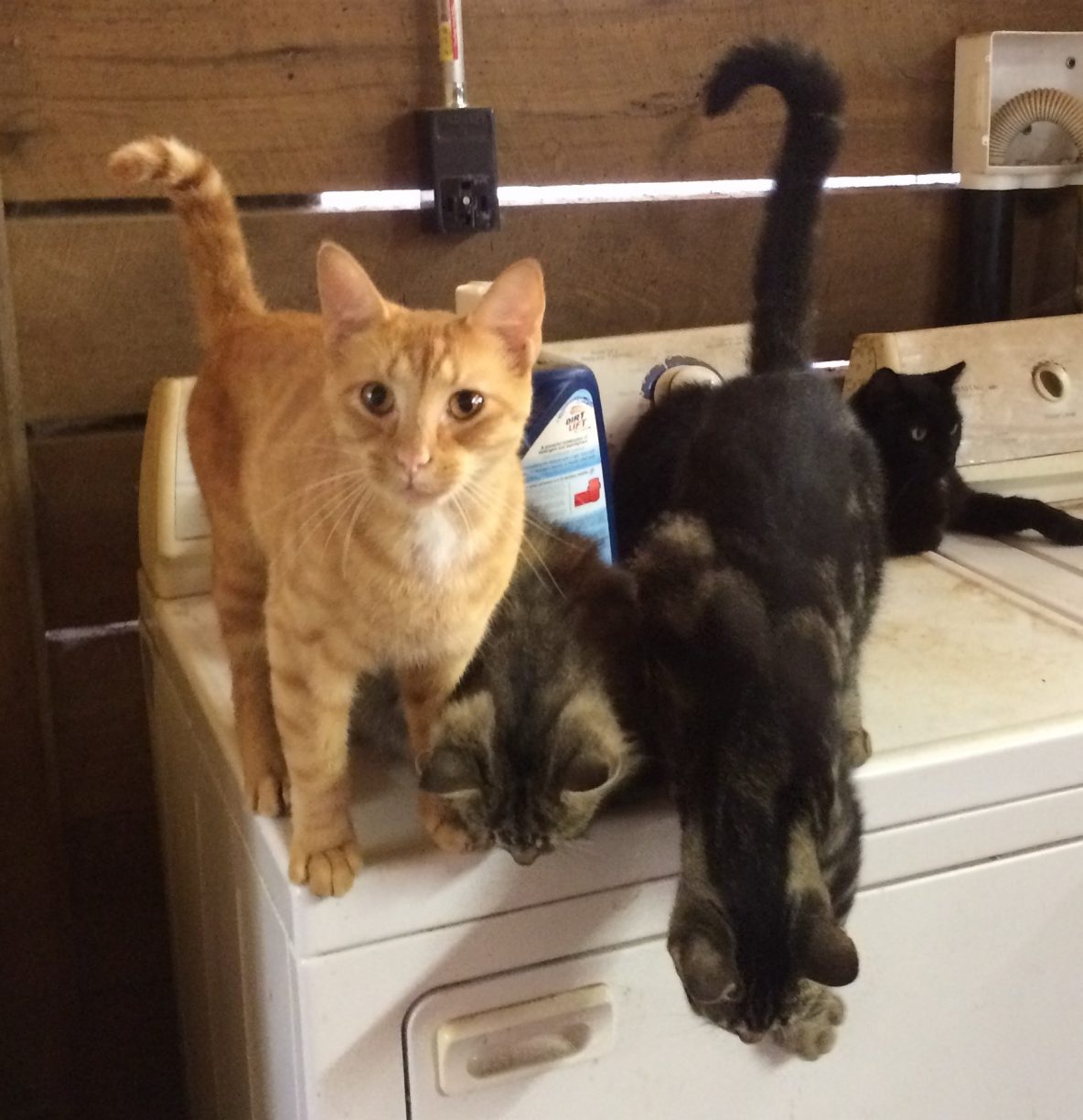Look for Clues
Peeing on rugs, carpets, furniture, or counters is one of the most frustrating problems cat owners may run into. But don’t just randomly try every piece of advice. Change is very stressful to a cat, and added stress could make the problem worse. Instead, try to figure out why he is not reliably using the litter box.
One clue is whether it is a small or large pool of urine. Large would be about a ¼ cup or more. Is it in many different places, or in just one or two spots? Are any walls, baseboards, or sides of furniture being soiled, or is it always a horizontal puddle? If it is always a puddle, is it pretty much a circle of pee, or is it more of a long, thin oval? How often does this happen? Did this happen suddenly?
Keep a Daily Log
The best thing to do is keep a log of what is going on. Note when and where this happens, including time of day and anything that happened beforehand, especially in the days before the first incident. This could help you solve the mystery. And it will surely save you money if you need to hire a cat behavior consultant. Your consultant can minimize the time it takes to solve this problem if you have good information for her to work with.
Is it Medical?
If your cat had been using the litter box regularly and all of sudden is emptying her bladder in many locations every day, take her right to the veterinarian! Even if she is still using the box each day, and even if the puddles are small, sudden daily accidents in different places in your home are a sign that she might not be able to control her bladder. This indicates a health problem.
Is the Litter Box Clean?
But what if it is just time to time, and the puddles are large and circular in one or two places? And what if sometimes those puddles are near the box? That is a clue that there is something about the box the cat finds unworkable. Is it clean enough? It’s an easy, stress-free experiment to scoop more often, but don’t go crazy with scrubbing the box. It’s the clumps and solid waste more so than the pee smell that will put a cat off.
Cats do not like the smell of detergent and soap. If you need to wash the box, use mild soap in very small quantities and rinse the box very well. Once a month is usually plenty of washing. Sometimes less is needed, especially if you spot clean in between. And it’s best to have at least two boxes for several reasons. One reason is so the newly washed box can have several hours to air out. But the main thing to do is scoop at least daily.
Is the Litter Box the Right Size?
Another cause of puddles of pee outside the box each week could be the box size. The box should be 1.5 times as long as your cat. So, if your cat measures 1 foot from the base of the neck to the base of the tail, his litter box should be 18 inches long. If he is any longer, he needs a longer box. Because most boxes are only 18 inches long, you will need an extra-large or a jumbo for many cats. A cement mixing tray works well for big cats. If you got your cat as a kitten, he very well could have outgrown his box by the time he is 1 or 2 years old.
Another box feature that puts off many cats is a hooded box. Cats like to see who may be coming, and like to have two escape routes from the box. This is why a box in an alcove or recess is often rejected by the cat as well. He may use it once in a while because he likes to dig, but at times he may choose the dining room rug, where he has a clear view.
Is the Litter Box in a Good Spot?
There are other box location issues that could be at play. Cats like to pee near or in their core territory – the part of the house they spend their time. If you only have a basement litter box, consider adding one upstairs. The best spot for now is where he is peeing – if this gets him using his box, you now know it was location! For getting him to use a different spot upstairs, why not play it safe and arrange a consult? There can be many factors at play, so it is best to have a professional help you.
Is the box near where you feed your cat? Cats avoid peeing where they eat, so changing feeding places could help. The first day serve a portion of the meal in the new spot, and the rest where you had been feeding him. He might accept the new location right away, or it might take a few days.
Is it the Litter?
It could be the litter is not to your cat’s liking. But don’t just dump new litter in his box! That is way too stressful. Instead, offer a second box with the new litter near an existing box. I recommend a dust-free litter. If this does not work, you could try Cat Attract litter. However, if you have a multi-cat household all the cats will likely gravitate to that one box – and Cat Attract is expensive. So instead, I would first try adding a cup or so of Cat Attract litter to a second box along with dust-free litter.
Is it a Multi-cat Household?
Speaking of multi-cat households, it is important to have one more box than you have cats, and these boxes must be in different locations. Three boxes in the basement is really just one big box, especially if they are side-by-side. Many cats do not like to share a litter box room. Even if you just have one cat, you may need two boxes – some cats like one for pee and one for poop.
Is it Litter Depth?
Another consideration is litter depth. Again, do not just change the depth! Offer a new box with a different depth near a box he uses. Some cats prefer very shallow litter. Keep a log for at least a week and see if he uses one box more than another. And don’t fill a box really deep so that you can just scoop daily and not need to add litter until the weekend. Change is not fun for cats, so that nice, thick carpet that is always the same could start looking pretty irresistible.
Should you Schedule a Consultation?
If none of this works, or if you just don’t want these new outside-the-box spots to become an ingrained habit, please let me help you. I also recommend scheduling a consultation if the cat is leaving small puddles in more than two places, or peeing on walls, baseboards, doors, sides of chairs, or other vertical surfaces. This is marking, and usually takes experience to resolve. You can read more about marking in my blog on spraying.
Patience Fisher owns Patience for Cats LLC, a cat behavior business based in Pittsburgh, PA. She is Associate Certified by the International Association of Animal Behavior Consultants. She holds a Bachelor’s of Science in Biology, a Diploma of Feline Behavior Science Technology, and is a certified veterinary assistant. Visit her on Facebook at Patience for Cats.


Comments 4
We bought a new rug for the bathroom one of those soft microfiber with nobs and she peed on it immediately. She doesn’t pee on the other flat rug. Do you know why?
Author
Some cats are put off by the smell of something new. Next time you get a new rug of furniture, keep her out of that room for a few days, so it loses that “new” smell. Or, if it’s small enough, shut it in a closet. And the first time she is allowed access, drop a treat after she smells it. Then call her away for another treat and shut the door. Have eyes on her the next time she gets access. Remove her if she turns to spray or pee.
My girl cats pees on things every day, whether it is my mouse pad, anti-slip shower mat, kitchen mat, litter mat, etc. At this point, I’ve removed all mats except for the anti slip shower mat and I try to keep my bathroom door closed at all times. But in the one or two times that I forget to close it, she pees in it immediately. She also loves to pee in the sink and any cloth items (towels, bedsheets, comforters, etc). We took her to the vet multiple times and she is not sick, we have multiple big litter boxes around the house (all litter robots that self cleans with plenty of litter), and I even added anti-stress diffusers around the house to help her with her separation anxiety. I keep my bedroom and guest room doors closed at all times because I know she’ll pee on my clothes/beddings. So I have to keep her in my office at night to prevent her from peeing elsewhere (which then she pees on my mouse pads, office chair, and sink). At this point, I’m at an absolute loss as to what to do with her and how to manage her separation anxiety (even when I’m in the house!). I work from home so I can’t have her glued to me night and day. We adopted a kitten 4 years to help her with her separation anxiety, and while she never bonded with her brother, I know his company helps her a little when we are away for a little bit. But even then, with her brother’s company and us being in the house, she still pees.
Do you have any recommendation? I’m about to expect my first born and my cat’s constant urinating/scent marking is driving me insane… I can’t risk her peeing on our baby items. I hate to give her away but I’m at wits end. Thank you so much for your insight!
Author
This is a complicated issue that would need a consultation. I would need to get an intake form, review it, then speak with you so we could devise a plan customized to you and your cat. You can fill out an intake form using this link. https://form.jotform.com/onebarnowl/cat-client-history